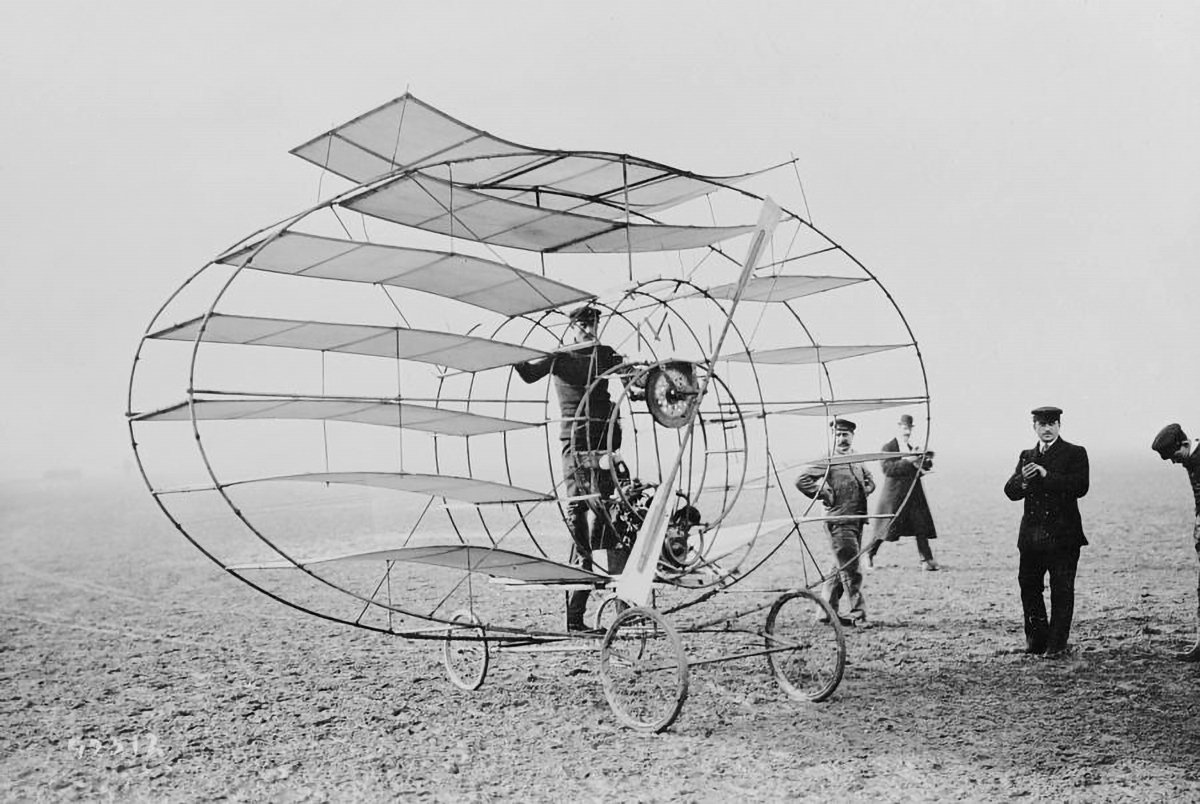The Marquis Multiplane
Photo of Marquis d'Ecquevilly’s flying machine, called the Multiplane, from 1907.
If two wings can provide enough lift to make an aircraft fly, surely adding more wings must make it fly even better, no? It’s a silly question by today’s standards, but in the early days of flight it was a legitimate inquiry to be studied. One man who decided to test the theory was Marquis d'Ecquevilly, and pictured above is the Marquis Multiplane which he designed in 1907. It’s a simple design with an elliptical frame built of wood and a total of six pairs of wings. At the center stands the pilot, with an engine and a single propeller. The entire machine rests on four bicycle wheels.
Little is known about the story behind the design, so suffice it to say that it never successfully flew. The lack of any controlling mechanism suggests it was just a prototype or it was still in the testing phase of development. After being destroyed by a fire in June 1908, d'Ecquevilly rebuilt the design with fifty (yes, fifty) pairs of wings instead of six, but this design never successfully flew either.
The Marquis Multiplane seems comical when we look back at it today, but credit must be given to d'Ecquevilly for giving it a shot and building the machine to test his theory. After all, unsuccessful designs and prototypes like this answer just as many questions as the successful ones, especially in a science that was still being developed and refined.
Read more about other ideas for flying machines here.

